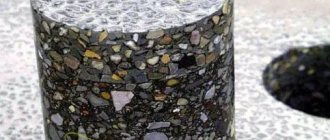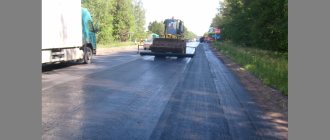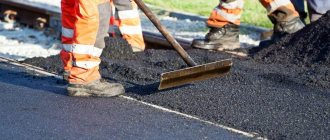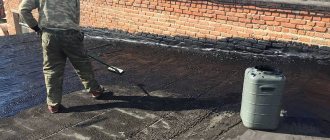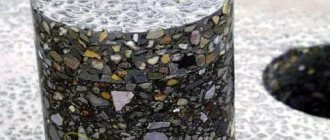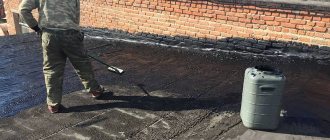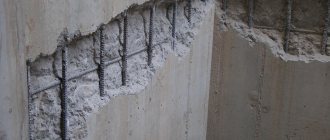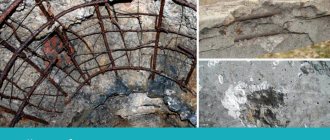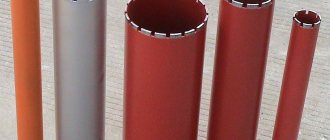Roads are traditionally considered one of the most popular topics for jokes. This is not surprising, because very often we see how almost freshly laid asphalt concrete pavement becomes unusable. But how can this be, because this is a high-strength material that must withstand enormous loads. Why does destruction occur? Installation errors, poor quality material or something else? Let's look at it in order.
Types of defects
Structural violations of the road surface may vary. In this regard, they are classified as:
- Drawdowns. In this case, we are talking about distortion of the road profile. The drawdown looks like a depression with gentle edges.
- Ruts. A very common problem is distortion along the knurling line.
- Breaks. Serious damage affecting the structural layers of asphalt concrete.
- Chipping. This happens when parts of the mineral composition begin to fall out.
- Edge damage. It is not uncommon to see ragged edges appear where the road meets the shoulder.
Also, shifts, waves, peeling, and cracks in the form of a grid or single ones may appear on the road surface. The variety is simply enormous, and the reasons for the appearance of such defects are even greater.
Causes and classification of road damage
Any discrepancy between the characteristics of the asphalt concrete pavement and the expected or required properties violates the integrity and technologically correct functioning of the object, which subsequently leads to destruction of the road surface.
Types of damage
Types of defects in asphalt concrete pavement are associated with a whole range of different factors:
- Structural (design) defects appear as a result of erroneous calculations during design, violation of technical specifications and incorrect application of regulatory documentation.
- Manufacturing defects are associated with a discrepancy between the actually implemented technical solutions (road slope, width of the roadbed, etc.) and the requirements of the developed design documentation.
- Technological - caused by violations of technological instructions, non-compliance with the rules and procedures for performing work.
- Operational - arise during the operation of the roadway and are the result of natural aging of the surface, wear, the influence of weather and climatic conditions, the impact of traffic loads, etc.
To determine the scale of violations, the defectiveness coefficient is used - this is the weighted average volume of damage per 1 m2 of surface.
Classification of possible structural violations
Destructions and plastic deformations of highways can be divided into two categories - coating defects, and damage with subsequent destruction of road pavements as a whole.
The most common damage to the roadway structure:
- subsidence is a distortion of the road profile in the form of depressions with flat edges;
Drawdown
- track - deformation of the transverse profile of the roadway along the run-up line;
Track
- breaks - thorough destruction of the structural layers of the coating with a sharp deformation of the transverse profile;
Broken canvas
- spalling - damage to the coating due to the loss of parts of the mineral material;
Crumbling of asphalt concrete pavement
- destruction of edges - collapse of the outer cut of road surfaces in places where they meet the roadsides;
Edge Fracture
- open cracks - linear untreated damage with a gap width of 3 mm or more.
Opened cracks
Coating surface defects include the following:
- shears - displacement of structural layers, usually on steep slopes or in braking areas;
Shift
- waves - alternation of elevations and depressions on the surface in the longitudinal direction relative to the central axis of the road;
Waves
- peeling - consistent destruction of the surface as a result of peeling off thin flakes of material;
Peeling
- potholes - defects in the form of depressions with sharply defined edges (depth 3 cm or more);
Pothole
- cracks (single, mesh) - longitudinal, intersecting, transverse breaks, randomly located on the surface without any pattern.
Mesh of cracks
Why does asphalt concrete deteriorate?
The main problem is associated with high power loads from moving vehicles. The quality of asphalt is also affected by the environment and the chemical composition of the soil. But there are many other common reasons.
Design errors
It will surprise no one that this happens quite often. Ideally, before laying a route, you need to carry out all the necessary research, study the condition of the soil, climatic features, intensity of traffic flow, etc.
If none of this is taken into account, then road structures will quickly turn into topics for jokes. Due to the fact that everything is done in a hurry, the integrity of the coating is compromised, and the asphalt quickly begins to sag.
Using old installation techniques
It would seem that progress does not stand still, but every now and then you can see how the simplest type of hot mix asphalt concrete is used on highways. It has been used for a very long time, but today this technology is outdated. This is explained by the fact that such mixtures contain low quality bitumen. It is not able to provide the necessary strength.
Modern technologies include the use of polymer-bitumen compositions, which do not reduce, but increase the characteristics of the future route. Also today on the market there is a huge selection of all kinds of additives that improve the adhesion of the material, resistance to weathering and cracking. Accordingly, new asphalt laying techniques and compositions have long been invented.
Violation of the installation process
We also encounter this problem all the time. Road structures are built in snow and rain, heat and cold. But other mistakes can also be made. For example, if asphalt concrete was transported incorrectly, the solution lost some of its characteristics. In fact, such a mixture cannot be laid.
In addition, with the hot laying method, the solution is applied at the wrong temperature. It would seem that after so many years it was possible to study this technology, but apparently this does not always happen. Even air bubbles that have not been removed after installation can lead to rapid deformation of the canvas. And if the solution is too thick, the road will peel and crack.
Exceeding permissible loads
Again, before approving the project, it is important to establish the throughput of the roadway per day. If the traffic flow is too large, and asphalt is laid for an average level of loads, then the service life of such a route begins to decrease exponentially.
As you can see, there are plenty of reasons, and most often we are talking about insufficient qualifications and ordinary human laziness. But there is a problem, how to solve it?
Varieties
Untimely repair of small defects and cracks leads to their increase in size.
Main types of road defects:
- End of use period. Occurs due to natural reasons of wear and tear of the road “shirt” when current and major repairs are not carried out, while the asphalt layer gradually decreases.
- Breaks. Formation of slots on roads. If they are not repaired in time, they will increase in size.
- Reduced material strength. Occurs as a result of exposure to the passage of heavy vehicles. In this case, the surface layer is destroyed and irregularities are formed.
- Peeling. It is formed under the influence of temperature changes, which provoke a decrease in the adhesion of the particles of the top layer of the coating.
- Potholes. Depressions in the asphalt surface that have sharp edges with an abrupt drop off. Appear due to improper installation process using low quality material.
- Crumbling. When laying material or repairing a structure, under unfavorable weather conditions - precipitation or sub-zero temperatures, asphalt particles crumble.
- Shrinkage of the canvas. It occurs due to the selection of low-quality materials or insufficient compaction of the mixture or soil underneath it.
- Cracks. Appear from exposure to temperature changes.
- Hydraulic influence. Melting snow and constant precipitation in the form of rain reduce the strength of the structure, destroying the canvas.
How road defects can be eliminated
There are removable and irremovable defects. In the second case, we are talking about the fact that the asphalt concrete is so damaged that there is no point in repairing it; the canvas needs to be completely replaced. Removable damage includes minor defects in the so-called road pavement, which can be eliminated without global intervention. Let's consider all the options.
Complete replacement of the canvas
A major overhaul implies that all the necessary studies of the route are carried out again, compliance with standards is checked and errors that were made earlier are found.
Healthy! An important stage is soil research, including a detailed study of the composition of the underlying layer.
If it is decided that the route no longer meets operational requirements, then the asphalt concrete pavement and its base are dismantled. Old asphalt is hauled by dump trucks to factories where the material is recycled for reuse. After this, a new underlying layer is equipped, and new road pavement is laid (preferably using new technology and using more modern solutions). After this, the highway can be assigned a different category in accordance with its cross-country ability.
Road surface regeneration
This beautiful word is used to describe the hot method of asphalt concrete restoration. In this case, the interventions are not so global; therefore, repairs will require much less labor, time and money.
Regeneration is performed as follows:
- First, the damaged layer of pavement heats up.
- The surface is milled.
- The asphalt concrete mixture is supplemented with modern binders and other modifiers. Everything gets mixed up.
- The finished improved asphalt concrete is evenly distributed over the base.
- Compaction and other technological procedures are carried out.
By the way, not every additive can be used in this case. It is allowed to use road bitumens that comply with GOST 22245-90 and mixture renovators. The latter represent a separate category of modifiers and plasticizers. Such components make it possible to reduce the viscosity of old asphalt concrete.
If we talk about the new mixture that is laid during regeneration, then asphalt granules with a fraction of 20-40 mm are used.
Pit restoration method
No, this does not mean that potholes are simply filled with gravel or crushed stone. Although this repair method has long been turned into some kind of joke, in reality this type of defect elimination actually exists.
Repairs can be performed using three methods:
- Jet-injection. It is used in the initial stages of destruction, when the size of defects does not exceed 50 mm. The method allows work to be carried out at any time of the year, with the only exception being heavy rainfall. Similar technology is also applicable on non-urban roads. The repair work is carried out in several stages. The contour of the defect is cut out with a milling cutter, the pothole is cleaned with compressed air, primed and a new mixture is introduced into it. After this, the coating is leveled.
- By using special organomineral compositions. This repair method is a cold type, so it can be performed in any weather conditions. However, the water resistance of the “restored” coating will be 2-3 times lower. Therefore, this method can only be used if we are talking about road surfaces of categories 3 and 5.
- Using hot asphalt concrete. Such repairs are carried out starting in early spring and before snow falls. An important point is that during the work the temperature of the mixture must be at least 100 degrees. The weakened material is removed, the damaged area is dried, primed, and the repair compound is laid and compacted.
What to do?
Non-critical damage to the roadway can be repaired, which is more economical than major repairs.
Before starting repairs, the condition of the road “shirt” is analyzed, determining the nature of the damage:
- hidden;
- explicit;
- critical.
These violations are further divided into 2 subtypes:
- Removable. It makes sense to repair damage from an economic and technical point of view.
- Unremovable. The canvas is so damaged that major repairs are needed to renew it.
Replacing the canvas
Before starting major work, the reason for the deterioration of the asphalt condition is determined, a technological map of the work process is drawn up, calculating the volume of necessary materials, labor and technical equipment. Then, with the help of auxiliary equipment, the worn “shirt” is dismantled and sent for further recycling. Conduct a study of the “cushion” and soil, and if necessary, then strengthening measures. Next, a new layer is laid according to the design conditions.
Sealing
This complex of restoration work involves sealing cracks or seams in the road surface with cold or hot rubber-bitumen and polymer repair mixtures. Minor cracks without jointing are eliminated with special joining bitumen-polymer tapes. Before applying these products, the damage is cleaned, heated with a gas burner, the material is applied, dried or the treated area is sprinkled with sand.
Regeneration
Asphalt regeneration is carried out using special equipment that converts old pavement into new one.
An economical repair method consists of the following steps:
- Heating the old coating. Using special equipment, the damaged road surface is heated to the required temperature.
- Milling. Using special machines, uneven surfaces are removed.
- Preparation of a new solution. The main components of the mixture with binding components are added with constant stirring.
- Asphalt distribution. The new coating is laid, compacted and all necessary measures are taken.
Asphalt concrete classes by abrasion
This classification was first introduced in the new GOST R 58406.1-2020 for crushed stone mastic asphalt concrete (SchMA) and GOST R 58406.2-2020 for hot ABS. In the old GOST 9128-2013, wear resistance was not standardized in any way.
In these standards, abrasion refers to additional characteristics of asphalt concrete mixtures. This means that the need to determine it is established in the documentation for a specific road project.
For hot mixtures and SMA, the following classification is established:
| Abrasion class | Abrasion according to Prall test, cm3 | Recommended conditions of use |
| 1 | Up to 25 | Roads with difficult traffic conditions |
| 2 | From 26 to 35 | Roads with normal driving conditions |
| 3 | From 36 to 45 |
For your convenience, below we have placed this same table in the form of a picture:
For small roads and passages with light traffic conditions, this indicator is not determined.
Please note that the new standards do not apply to cold asphalt. This is due to the fact that roads are not built from it. Therefore, there is no point in creating new standards for this material.
In the final section, we will look at the main ways to reduce the abrasion of road surfaces.
Method for determining the wear resistance of asphalt (Prall test)
The method for testing asphalt for abrasion is described in GOST R 58406.5-2020. It was based on the Prall test, which is used in Europe to assess the effect of studded tires on road surfaces (EN 12697-16).
To carry out measurements, four samples of the same ABS are taken, from which samples with a diameter of 100 mm and a thickness of 30 mm are formed in the laboratory.
The procedure looks like this:
- For each sample, its bulk density G in g/cm3 is determined. You can read more about how it is measured in the article Density and mass of asphalt.
- The samples are kept in cool water (5°C) for five hours, after which they are removed and wiped with a damp towel. Their mass m1 in g is recorded.
- The first sample is placed in the test setup. It consists of a vibration-driven chamber in which the asphalt is exposed to 40 steel balls. The test time is 15 minutes.
- The sample is removed from the chamber and washed, and then excess moisture is removed with a towel. Record the mass m2 in g.
- Abrasion is calculated using the formula:
- Steps 3-5 are repeated for each asphalt concrete sample, then the arithmetic mean of the obtained values is calculated and rounded to the nearest whole number.
Based on this test, the material is assigned to one or another wear resistance (abrasion) class. We'll look at them in detail in the next section.
